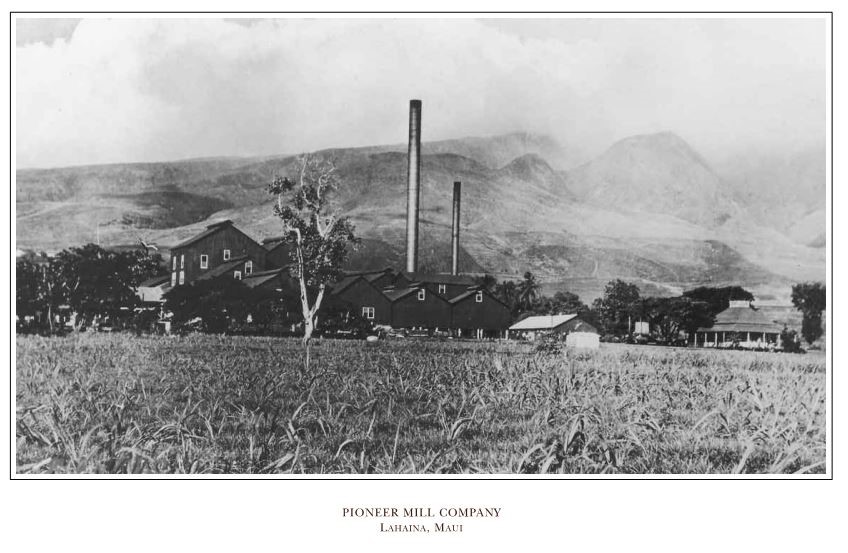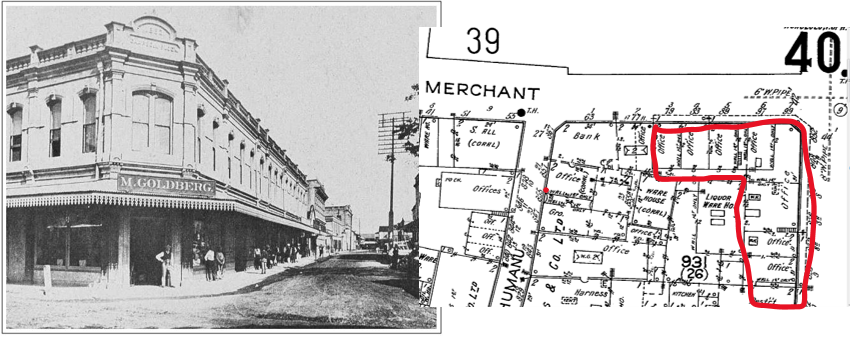Guest contributor Gary Coover encounters a highly unusual building and unravels its intriguing history.
So what’s your favorite historical building in Hawai‘i? And why?
My personal favorite is two stories tall, and about two feet wide. Huh?!?
It’s located on Merchant Street, the original “work” street in Honolulu, ironically built along the largest ‘ulu maika “play” field frequented by none other than King Kamehameha himself.
The buildings along Merchant Street are where many of Honolulu’s most important businesses began, and many of these buildings are still extant today, dating all the way back to the Melcher & Reiners Building built in 1853. Neighboring buildings include the Old Post Office (1871), J.T. Waterhouse Building (1870s), Bishop Bank (1878), Royal Saloon (1890), Bishop Estate Building (1896), Judd Building (1899), Stangenwald Building (1901) and Honolulu Star-Bulletin Building (1912) and the Old Police Station (1931).
It’s also home to the Campbell Block, if you can find it.
Maybe this clue will help: it was a massive building fronting a major commercial intersection in its day and has an incredible story.
THE MAN
Born the eighth child in a family of eight boys and four girls in Londonderry, Ireland, in 1826, James Campbell stowed away to sea when he was only 13 years old. After a couple of years in Canada and New York, he signed on as a carpenter on a whaling ship bound for the Pacific in 1841. They survived the passage around Cape Horn only to be wrecked on a reef in the Tuamotus Islands between Pitcairn and Tahiti.
He clung to a spar and was washed to shore where he and two shipmates were quickly captured by locals and tied up.
Unfortunately, the local chief had a musket. But it was broken. Luckily for young Campbell, he knew he could fix it. Threats to their safety now averted, the three castaways became welcome and handy members of the island community.
James later escaped to a passing sailboat that took him to Tahiti where he stayed for several years until a different whaling ship took him to Lahaina in 1850. Forsaking life on the sea, he worked as a carpenter building boats and houses and even a small wooden cradle for a friend’s baby who, unbeknownst to him, would become his second wife 19 years later(!)
THE BUSINESS
 With the decline of the whaling trade in the late 1850’s, he founded the Pioneer Mill Company with Henry Turton and James Dunbar to service the growing sugar cane industry. Their sugar even won an award at the 1876 World’s Fair in Philadelphia.
With the decline of the whaling trade in the late 1850’s, he founded the Pioneer Mill Company with Henry Turton and James Dunbar to service the growing sugar cane industry. Their sugar even won an award at the 1876 World’s Fair in Philadelphia.
The business was incredibly profitable, and Campbell acquired the Hawaiian name of “Kimo Ona-Milliona” – James the Millionaire.
He sold his interest in the business in 1877 when he married Abigail Maipinepine, the girl from the cradle and 32 years his junior, and they moved to Honolulu.
Campbell had the foresight to invest in undervalued real estate in areas like Kahuku and Honouliuli, along with a plan to irrigate them. In 1879, he drilled the first artesian well in Hawai‘i and became a pioneer in transforming dry, flat land into lucrative agricultural holdings.
THE BUILDING
In 1883, Campbell built the Campbell Block, a large 2-story buff-colored building at the Ewa-Makai corner of Merchant and Fort Streets. This building was the headquarters of the Campbell Estate until 1967.
In 1965, modernist San Francisco architect Leo S. Wou drew up plans to replace the 1883 Campbell Block with a combined office and parking structure designed in the concrete “Brutalist” style popular in Hawaii at the time. A few years later Wou also designed the Financial Plaza of the Pacific just across Merchant and Fort Streets from the new Campbell Building. Charlie Pankow was hired as the contractor and he demolished the 1883 building.
Well, 99.9% of it. All except for one little piece sandwiched between the new building and the 1896 Bishop Estate building.
For reasons unknown, one 2-story pilaster is all that survives of the original 1883 Campbell Block building. Was it purposefully left as a poignant reminder of what went before? Or perhaps it merely shared a common wall with the Bishop building and was deemed too risky to remove?
Either way, I happened to notice this remnant quite by chance and its very survival and mystery piqued a curiosity that inspired me to research the backstory about James Campbell and the grand building that once stood on this spot.
And that’s why it’s my favorite building in Honolulu – not much is left, and what’s there is really well hidden, but it made me want to know its story.
This little sliver tells the much larger and amazing account of a disgruntled teenage Irish stowaway who was shipwrecked, captured, and even later kidnapped, but who became one of the most successful pioneer businessmen in Honolulu’s history.
The company he founded is now headquartered in Kapolei and has a portfolio valued at $3.2 billion in 13 states across the US that totals 19.5 million square feet of buildings, 7.2 million square feet of ground leases, and 2,746 acres of land.
Plus one tiny little 2’ slice of Honolulu’s early business and architectural history.
By Gary Coover, engineering consultant and member of Historic Hawai‘i Foundation
For further reference:
Merchant Street Historic District Historic Register nomination https://historichawaii.org/2014/02/19/merchant-street-historic-district/
The Story of James Campbell
https://www.jamescampbell.com/wp-content/uploads/2017/02/JamesCampbellStory.pdf



